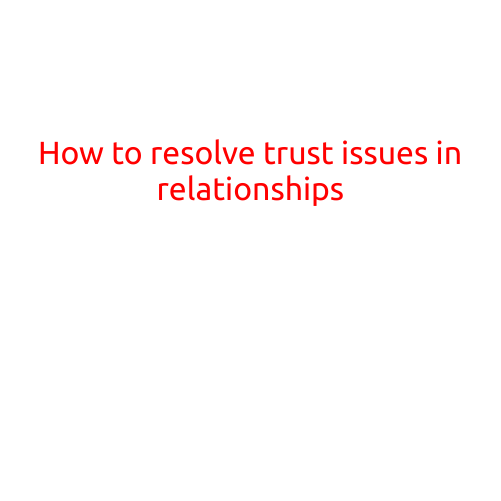
How to Set Boundaries in a Romantic Relationship
Setting boundaries in a romantic relationship is essential for maintaining a healthy and fulfilling partnership. Boundaries help define what is and isn’t acceptable behavior, ensuring that both partners feel respected, heard, and valued. However, many people struggle with setting boundaries in their relationships, often due to fear of rejection, codependency, or lack of communication.
In this article, we’ll explore the importance of setting boundaries in a romantic relationship, provide tips on how to set and maintain them, and offer strategies for overcoming common challenges.
Why Set Boundaries in a Romantic Relationship?
Setting boundaries in a romantic relationship serves several purposes:
- Respect: Boundaries show that you respect both your own and your partner’s needs, desires, and limits.
- Communication: Clear boundaries facilitate open and honest communication, reducing misunderstandings and conflicts.
- Trust: Establishing boundaries helps build trust, as both partners understand what is and isn’t acceptable.
- Emotional Safety: Boundaries provide emotional safety, allowing both partners to feel secure and valued in the relationship.
- Personal Growth: Setting boundaries empowers individuals to prioritize their own needs, leading to personal growth and self-awareness.
Tips for Setting Boundaries in a Romantic Relationship
- Identify Your Limits: Take time to reflect on your needs, desires, and limitations. What are your non-negotiables? What makes you feel uncomfortable or anxious?
- Communicate Openly: Share your boundaries with your partner in a clear, respectful manner. Use “I” statements to express your feelings and avoid blame or criticism.
- Set Specific Boundaries: Be specific about what you are and aren’t comfortable with. Avoid vague statements like “I’m not sure” or “I don’t know.”
- Be Flexible: Boundaries are not meant to be rigid or inflexible. Be willing to compromise and adjust your boundaries as needed.
- Watch for Power Dynamics: Pay attention to power imbalances in your relationship. Ensure that both partners feel heard and respected, and that boundaries are not used as a means of control.
Overcoming Common Challenges
- Codependency: Breaking free from codependency requires setting healthy boundaries and prioritizing personal needs. Seek therapy or counseling to address underlying issues.
- Fear of Rejection: Rejection is a natural part of setting boundaries. Practice self-compassion and remind yourself that setting boundaries is a sign of self-respect and self-care.
- Resistance: If your partner resists or disrespects your boundaries, remain firm and assertive. Reiterate your needs and limitations, and seek support from trusted friends, family, or a therapist.
- Compromise: Learn to negotiate and find common ground. Compromise can help strengthen your relationship and deepen your understanding of each other’s needs.
Conclusion
Setting boundaries in a romantic relationship is a vital step towards building a healthy, fulfilling partnership. By setting clear boundaries, communicating openly, and being flexible, you can create a safe and supportive environment for yourself and your partner. Remember that setting boundaries is a process that requires patience, self-awareness, and practice. By prioritizing your own needs and limitations, you can cultivate a deeper, more meaningful connection with your partner.





